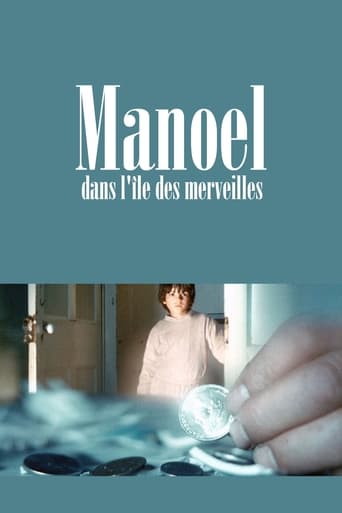Manuel on the Island of Wonders Season 1

This three part French TV serial for children (alternate versions exist as a feature, Manoel’s Destinies, and a 4 part Portuguese TV serial, Adventure in Madeira) is the favourite of many devotees of Raúl Ruiz. This is because it ties the enchantment and mystery of Lewis Carroll, Carlo Collodi and the Brothers Grimm to the filmmaker’s experiments with narrative strategies and what he calls the pentaludic model of storytelling (where characters are thrown dice-like into combinations and situations governed by the play of Chance and Destiny).
Watch NowWith 30 Day Free Trial!
Manuel on the Island of Wonders
1984
This three part French TV serial for children (alternate versions exist as a feature, Manoel’s Destinies, and a 4 part Portuguese TV serial, Adventure in Madeira) is the favourite of many devotees of Raúl Ruiz. This is because it ties the enchantment and mystery of Lewis Carroll, Carlo Collodi and the Brothers Grimm to the filmmaker’s experiments with narrative strategies and what he calls the pentaludic model of storytelling (where characters are thrown dice-like into combinations and situations governed by the play of Chance and Destiny).
Watch Trailer
With 30 Day Free Trial!
Manuel on the Island of Wonders Season 1 Full Episode Guide
Part Three (beginning in Episode Two), entitled ‘The Little Chess-Champion’, hands the (until now) off-screen voice-over narration to Manoel himself. He promises to tell his own story, but adds that it’s ‘a story that I made up in my distant childhood and that happens in the future’. The tone is less Baroque, more Gothic, as Ruiz explores the ‘wonders of the night’. The filmmaker’s obsession in this section concerns perception and the deciphering of secret signs and codes.
Part Two (the status of which is at first confusing since it begins after the three mini-narratives of the first Part and before the end of Episode One) is entitled ‘The Picnic of Dreams’. Whilst vaguely ‘keeping to the storyline’, it veers off in many different directions, where the thematic coupling ordinary/special replaces the familiar/unknown dualism of Part One. (Each Part is guided by a thematic ‘dominant’, a pair of notions that tend to exchange their meanings as it progresses.)
Part One presents us with three possible worlds. In each world, seven year-old Manoel has a different response to an entreaty from the outside world. Fittingly, in this film in which nothing coincides, the three parts of the story do not coincide with the three-episode structure (the trinity-form recurs frequently in Ruiz). In this case, past, present and future – the unholy trinity or Time en soi – is the film’s very protagonist, variously called ‘long ago’ (Part One), ‘now’ (Part Two), and ‘future’ (Part Three). At the outset, this gives the story an apparent order before digressions take it over.
Free Trial Channels
Seasons


























